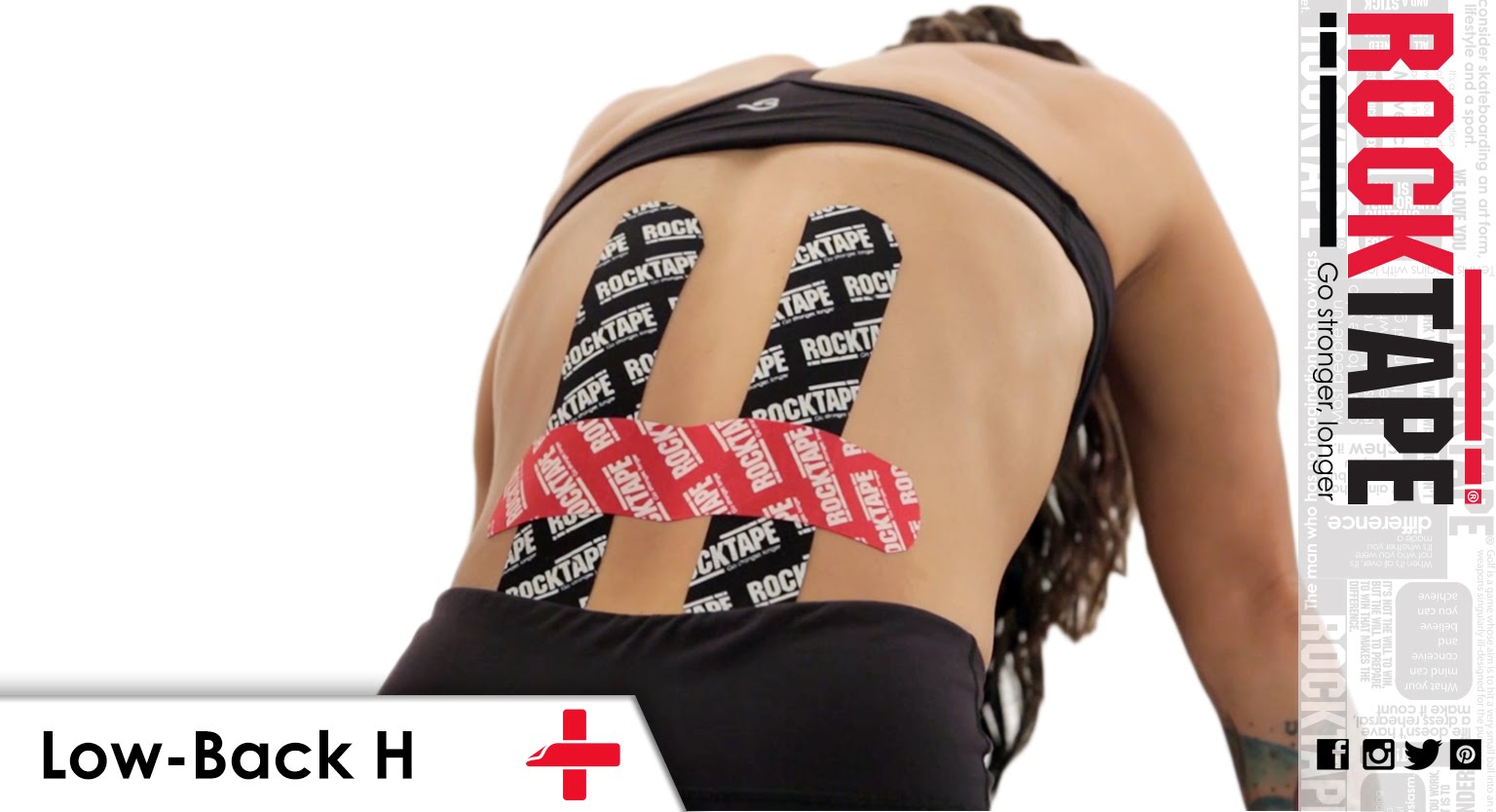
by Steve Capobianco, DC, MS, RockTape Medical Director
How can clinicians integrate kinesiology taping into care plans for low back pain patients?
The integration of kinesiology taping can be considered an extension of your hands-on therapy. More and more research is supporting the use of taping to mitigate both acute and chronic back pain (1). By simply applying tape to the affected area, a patient can experience improvement in subjective pain, improved awareness, and a sense of support that has a tendency to give them more confidence to participate in the activities of daily living. Psychologically and socially, these effects a paramount in the ability to combat low back pain.
What is the benefit of combining taping and corrective exercises vs. just doing one or the other to improve low back pain?
The literature is also supporting the idea of combining tape with corrective exercise (2). Compared to therapy and exercise alone we are finding that the addition of tape can accelerate the treatment outcomes and extend the benefit of their care.The theory is that kinesiology tape can improve tactile acuity by stimulating certain receptors that respond to skin shear, depression and distraction of which has the ability to enhance body awareness and lumbopelvic control. In addition, the ability of he tape to remain in contact with the skin for 3-5 days augments the opportunity to create long standing changes to the brain (neuroplascticity concepts).
What are your go-to taping applications for acute low back pain?
There are two acute low back taping applications that I will use. The first is the standard 2″ (H Pattern) taping application and the second is the 4″ (Big Daddy) variation that seems to be more appropriate for larger body surfaces.
What are your go-to corrective exercises for acute low back pain? How frequently should patients do them and how long does it takes to see improvements?
I am a less is more practitioner. In an attempt to manage optimal compliancy I attempt to prescribe those that give the biggest bang for the buck in the least amount of exercises. That being said, my go to’s are the McKenzie patterns to start with (acute) and then I move towards McGill Big 3 as soon as possible to address tri-planar dysfunction.
Suggestions on prevention strategies for low back pain?
If I can steal directly from Gray Cook, my suggestions to prevention strategies revolve around:
1. Move Well
2. Move More Often
As a general rule the above strategy tends to work best for the majority of people. We all know the answer is more robust then just that but if you reduce the equation down to its simplistic form, moving well and more often typically suffice.
References:
1. Kalron, A.. Bar-Sela, S. A systematic review of the effectiveness of Kinesio Taping–fact or fashion? Euro J. Phy Reh Med. 2013.
2. Choon Wyn Lim, E., Guo Xiang Tay, M. Kinesio taping in musculoskeletal pain and disability that lasts for more than 4 weeks: is it time to peel off the tape and throw it out with the sweat? A systematic review with meta-analysis focused on pain and also methods of tape application. Br J. Sports Med. 2015.
Watch our Course “Kinesilogy Taping from Acute to Corrective Care”
The WebExercises Story:
WebExercises was created by clinicians who wanted to find a better way to help patients succeed with their exercise rehabilitation programs. As clinicians we are limited with time therefore WebExercises was developed to efficiently design home exercise programs. We offer an engaging patient experiencethat can be monitored virtually by the clinician keeping your patients motivated outside of your office. Since 2005 we have delivered over 20 million exercises saving clinicians time and improving patient adherence. To find out more how WebExercises can improve your practice call us 866-411-4825 or visit webexercises.com/join



